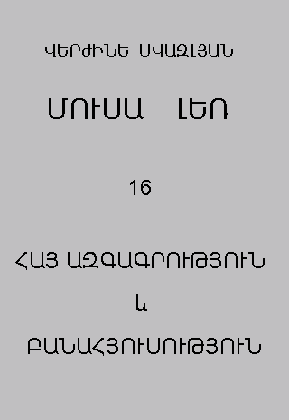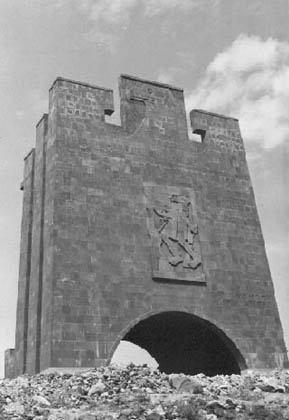
|

|
| About this page in Armenian |

|

|
Moussa Ler (Moussa Dagh) is the name of a locality on the northeastern shore of the Mediterranean, populated since of long with an ethnographic group of Armenians.
In time of the 1915 wholesale massacre of the Armenians they rose to worldwide renown for their forty-day-long heroic battle, after which they commenced a nomadic life in different countries. In 1946 the greater part of those wanderers was repatriated to Soviet Armenia.
The present edition is the first attempt to sample nearly all the traditional folklore genres of the natives of Moussa Ler.
The collection comprises 1319 texts of different productions, characteristic of the repertory of Moussa Ler natives living in Armenia.
The folklore data are presented in three large sections:
The data were recorded with due account of their dialectological principles, each provided with parallel entries of equivalents in literary Armenian.
The edition includes a vocabulary explaining the difficult words and expressions, the biography of narrators, comments marked with archival references showing motif parallels in world tales, tables, a number of notations of songs based on their execution, as well as a map portraying the repatriation of the natives of Moussa Ler to Soviet Armenia.
The introduction enlists general information on Moussa Ler and its former inhabitants and a number of results of special studies of the folklore repertory of this group.
The folklore data were recorded in two periods: 1955-1960 and 1972-1978. A collection of statistical and analytical observations made in time of two expeditions enabled us to draw a number of synchronous and diachronous conclusions. Thus, tendencies of qualitative changes on the synchronous plane make themselves felt in the quantitative reduction of the traditional repertory, apparently due to generation shift: the departure of the senior generation of narrators brings about a gradual disappearance of oral folktales.
Making use of the Armenian system of documentation (ASL) worked out by Isidor Levin, a doctor of philological sciences, as well as the research methods he has suggested, we have succeeded in a number of cases in objectifying the changes in the folklore of the natives of Moussa Ler, accountable in terms of modified historical and geographical setting, the growth of social and cultural standard and the shaping of a new thinking and psychology.
The research method and the references drawn upon in the writing may prove of interest not only to the folklorists but also to the historians of Armenian culture, dialectologists and sociologists.

|
Previous Folk Tales | Next Cilicia |